WAVE POOL: A BRIEF HISTORY
TRANSFORMING FROM THE ELABORATE GARDENS OF EUROPEAN KINGS IN THE RADICAL ABILITY TO GET BARRELLED AT THE FOOT OF THE ALPS IN ALAIA BAY, IT’S SAFE TO SAY THE LAST 30 YEARS OF WAVE POOL TECH HAVE SEEN THE ARTIFICIAL WAVE ACCELERATE BEYOND ANYONE’S EXPECTATIONS. FOR YEARS THE IDEA OF TRULY FUN, SURFABLE WAVES BEING A POSSIBILITY ANYWHERE BUT A REEF OR BEACHBREAK JUST FELT LIKE A FANTASY.
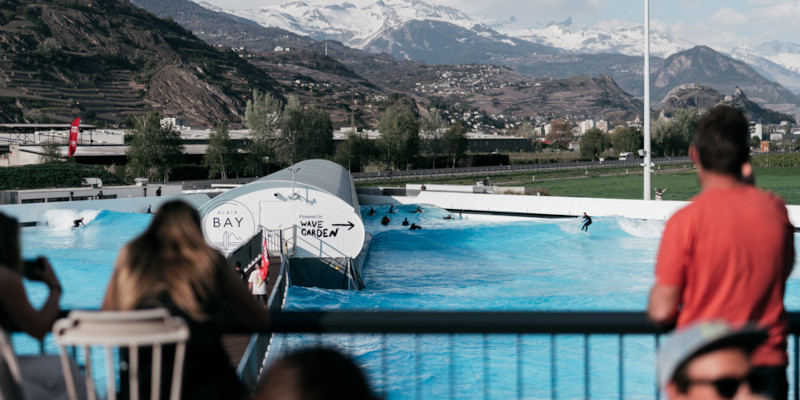
It’s not been a smooth ride, with countless disappointments, controversies, and wasted millions, the wave pool concept has been a provocation for innovation that refused to go away. Only in the last 10 years have engineers hit the nail on the head and achieved those endless glassy barrels miles from the ocean. So, lets take a quick look through those failures and successes that have landed artificial wave tech where it is today.
In Europe, Ludwig II, 1870 of Bavaria was a fan of excessive gardens, one of which included private garden pool which he created by initially electrifying the water to make little swells, and then by rocking pontoons. Around a similar time, a wave pool for swimmers appears in Hungary, the Gellért Baths. While boards never made to either, they were pretty impressive for the time. The real game-changer for surfers came in 1966, with the Summerland Wave pool in Akiruno, Japan. Dubbed the ‘Surf-a-torium’, it was the first sign that wave pools could be more than just swimming spots, yet surfers saw only 15 minutes once on the hour before having to clear the way for swimmers. Pretty soon after in 69′, the U.S. opened it’s first wave pool for surfers. Which came first is up for debate, but most people settle on the Big Surf waterpark in Tempe, Arizona. Gallons of water being thrown over a steep concrete wall created chest-high waves that were pretty popular, even pro Fred Hemmings giving it a try.
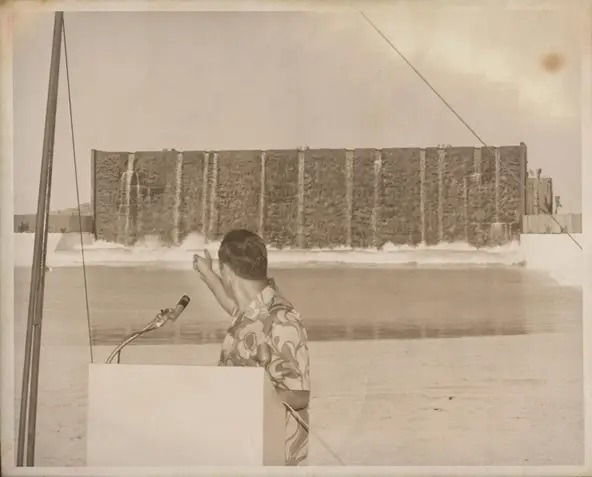
1969, Phil Dexter announcing the opening of Big Surf (Photo: Big Surf Waterpark)
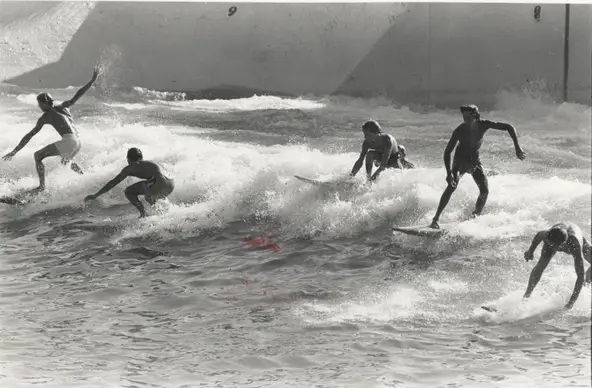
Big Surf Tempe, Arizona in 1980 (Photo: Tempe History Museum)
Then came Wildwater Park, Allentown Pennsylvania. Just days after opening the park hosted the ‘World Professional Inland Surfing Championships’. Tom Curren caught a single wave, which he rode in, leaving the pool looking pretty disgusted. As Stab put it reflecting on the event in 2015, competitiors were ‘forced to grovel across 2.5-second-period chlorinated slop for points’. So yeah, not great.

Wildwater wave pool, Allentown 1985 (Photo: Robert Beck)
At this point wave pools were nonsensical, representing a comedic low in the surf industry and nothing more than a reckless money-making ambition. However fast forward to the 21st century, it’s only natural that it takes the GOAT himself Kelly Slater to breathe life into the idea of artificial waves. His 10 year project in Lemoore, Cali – Surf Ranch became a defining change to the trajectory of wave pools. Modelling the wave off a secret right in the Marshall Islands, Micronesia, it gave ‘nail-biting barrels’ of up to 45 seconds. This was the first time technology came close to nature.
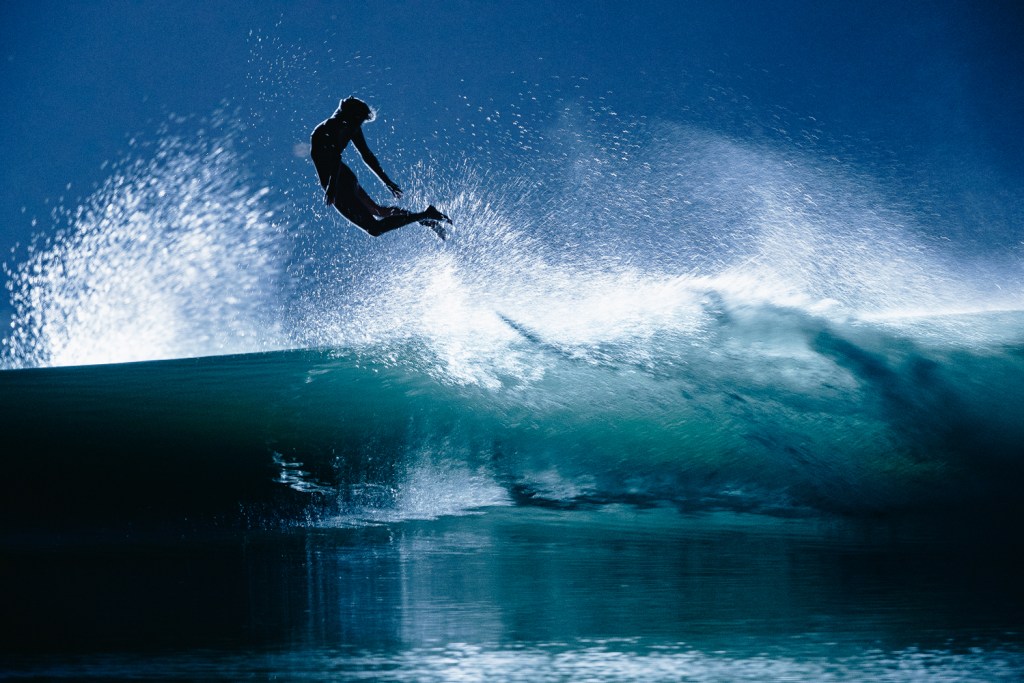
The collaborative film ‘Electric Wave’ fillmed at Kelly Slater’s Surf Ranch puts the wave on display. Legends Steph Gilmore, Coco Ho & Leah Dawson sharing immense waves by night. Watch the full film here.
Now Alaïa Bay was not the first time artificial waves appeared in the foot of mountains. At the same time that Kelly was working with engineers of their tech, so was the creators of Wavegarden, who developed the first artificial wave to come to the U.K, Surf Snowdonia in Wales. Since closed, Surf Snowdonia was a softer wave with a large face, yet good enough to host the Red Bull Unleashed the same year it opened. Until this point wave pools were pretty much all using plows to generate waves, needing large stretches of land to push water along and create a wave. This means waves per minute were pretty slow, as the plow needs to reset each time. This is were Wavegarden evolved into the next generation – the Cove. Wavegarden Cove departs from other technology, using electro-mechanical modular hydrofoils, or separate components that can be altered using software. These foils are customizable in shape and height and are able to generate up to 1000 waves per hour by replicating the exact movements of water molecules during ocean swells, all from one structure. This is how Alaïa Bay can create our Beast and Malibu waves in the same day. Wavegarden Cove tech is all over the globe, from Bristol to Sydney.
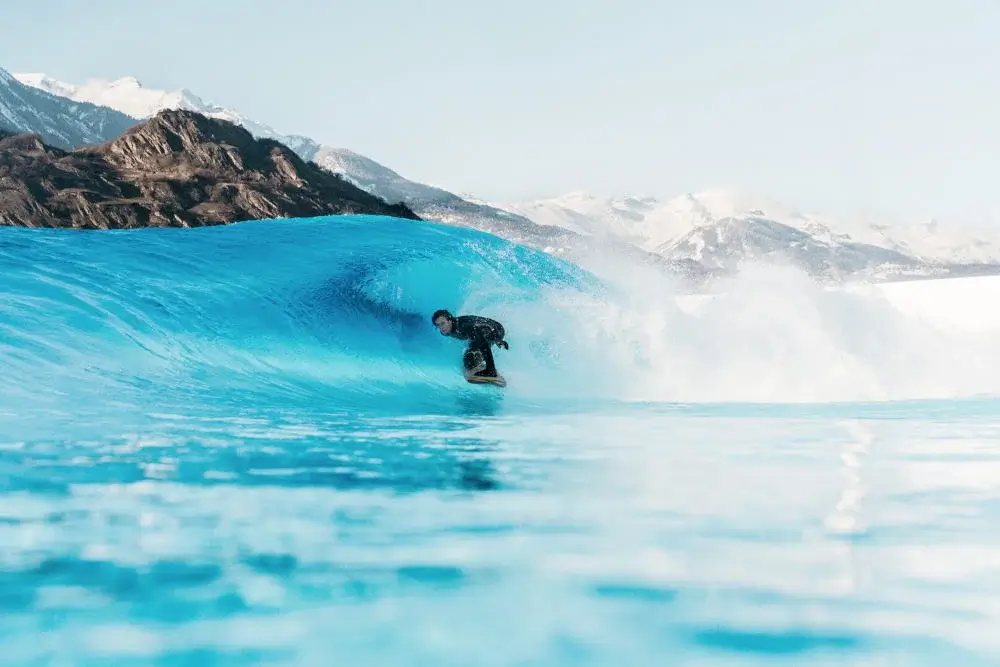
Finding shade in the middle of the Alps with Wavegarden tech at Alaïa Bay.





